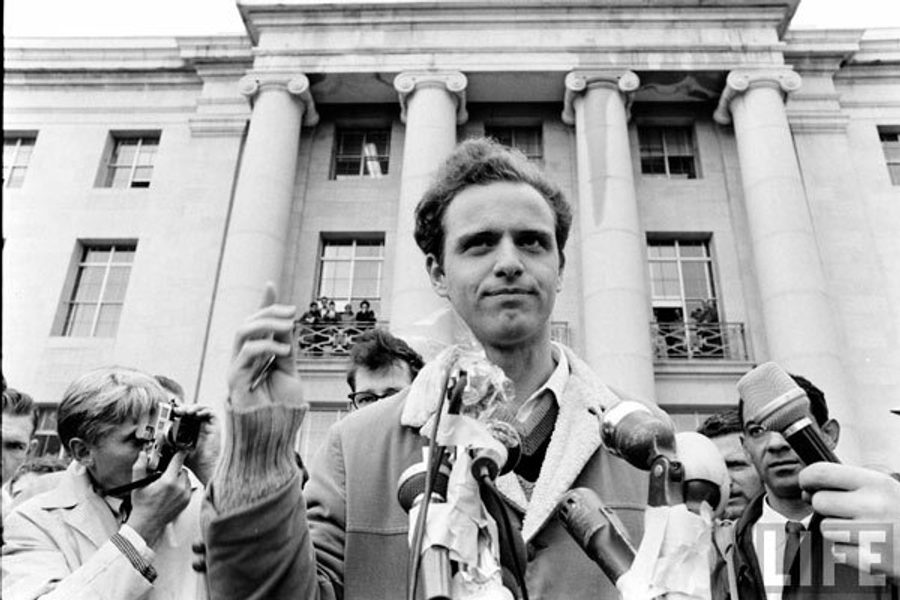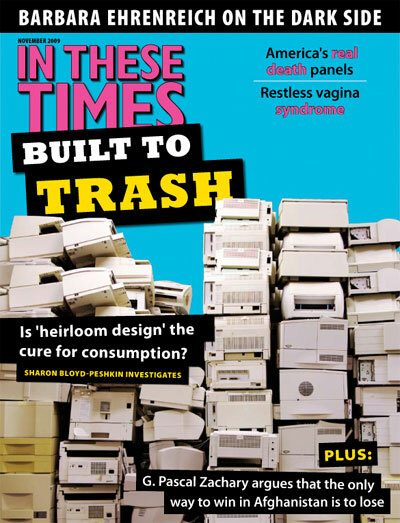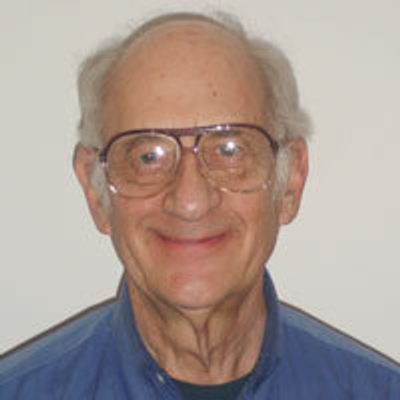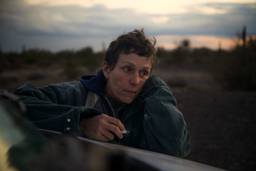
Mario Savio’s place in American history is defined by the climax of the speech he gave as a 21-year-old student in December 1964, on the steps of the University of California administration building, at a key moment in the Berkeley Free Speech Movement.
The movement was a protest against the university’s clampdown on political speechmaking and recruiting for civil rights activism on campus. President Clark Kerr and various bureaucratic intermediaries disdained the movement as a disruption of the modern “multiversity” (Kerr’s own term) as a smooth-running, quasi-corporate knowledge factory.
When punitive action was taken against Savio and other leaders, Savio responded:
If this is a firm, and if the Board of Regents are the board of directors, and if President Kerr in fact is the manager, then I’ll tell you something – the faculty are the workers, and we’re the raw materials. But we’re a bunch of raw materials that don’t mean to have any process on us, don’t mean to be made into any product, don’t mean to end up being bought by some clients of the university, be they the government, be they industry, be they organized labor – be they anyone. We’re human beings!
There’s a time when the operation of the machine becomes so odious, makes you so sick at heart, that you can’t take part; you can’t even passively take part, and you’ve got to put your bodies upon the gears and upon the wheels, upon the levers, upon all the apparatus, and you’ve got to make it stop. And you’ve got to indicate to the people who own the machine that until you are free, the machine will be prevented from working at all!
The speech, followed by the sit-in of the administration building by more than 1,000 students, was indelibly captured on film in Mark Kitchell’s documentary Berkeley In the Sixties. But it has never been widely published until its appearance this year, along with nearly 100 pages of Savio’s other speeches, in Robert Cohen’s superb Freedom’s Orator: Mario Savio and the Radical Legacy of the 1960s (Oxford, August).
Cohen, professor of history and education at New York University and the author of previous books on the Free Speech Movement and the Old and New Lefts, draws from a wealth of interviews with Savio, his two wives, two of his sons and others who knew him best, as well as from Savio’s memoirs and collection of speeches, left uncompleted when he died of a heart attack at 53 in 1996.
Savio was born to an immigrant Italian, working-class family in Queens. He suffered in childhood, and periodically throughout his life, from depression, panic attacks and a stammer that he overcame through elocution lessons. Recognized early as a genius, he was an award-winning science student at Van Buren High, and predictions for his brilliant future were either as a physicist or a priest.
He was also an ardent student of philosophy (his major at Berkeley), the classics, political theory and literature, which provided a poetic dimension to his speeches. His valedictorian address at Van Buren, included here, was redolent of Emerson and Thoreau in its critique of the post-war affluent society: “We must free ourselves from obsession with the material. … Having once again become master of things, we must never again allow things to become our masters.”
That line anticipated these memorable ones at Berkeley:
The “futures” and “careers” for which American students now prepare are for the most part intellectual and moral wastelands. This chrome-plated consumers’ paradise would have us grow up to be well-behaved children. But an important minority of men and women coming to the front today have shown that they will die rather than be standardized, replaceable and irrelevant.
Savio’s orthodox Catholic upbringing gradually morphed into sympathy with liberation theology and Dorothy Day’s Catholic Worker movement. At Queens College in 1963, he spent the summer on a project organized by the campus Newman House, assisting the poor in Taxco, Mexico. That fall, his parents moved to California and he transferred to Berkeley. Baptized by San Francisco protests for civil rights and against the House Un-American Activities Committee in 1963-64, he became active in the Student Non-Violent Coordinating Committee, whose campaign he joined for the 1964 Freedom Summer in Mississippi.
His efforts with other students to continue civil rights activism when they returned to Berkeley that fall set off the Free Speech Movement (FSM), which, with Savio as its most eloquent leader, eventually prevailed over administration opposition.
Savio’s life after FSM, far less known, is explored in Cohen’s final hundred pages. The positive achievements and hope for progressive, nonviolent social change coming out of the civil rights and free speech movements were rapidly eclipsed by the escalation of the Vietnam War and rise of the Black Power movement, contributing to a period of increasingly violent clashes between dissidents and police in Berkeley and elsewhere throughout the late ’60s and early ’70s.
Although Savio remained active in the anti-war, civil rights and campus movements, his moment as a charismatic leader had passed – largely by his own choice. By all accounts, he was a shy, modest person who was uncomfortable in any position of leadership and never craved the public spotlight – he adhered to the New Left credo, “Don’t follow leaders.”
Savio’s radicalism was in the deeply American vein of individual conscience, expressed in transcendentalist and existentialist terms. He could never embrace Marxism and detested the sectarian battles that shattered the New Left in the late ’60s. In his steadfast commitment to non-violent activism, he was heartsick over the murders of progressive leaders, the turn toward violence on the left, and its exploitation by politicians like Ronald Reagan and Richard Nixon to incite the right-wing backlash that came to dominate American politics for the next four decades.
Like several other leaders of the early New Left, he suffered a nervous breakdown in the early ’70s, under both political and personal stresses. Not until 1978 was he able to complete college study at San Francisco State University, where he received bachelor’s and master’s degrees in physics. He was then hired as an instructor at Sonoma State University, where, characteristically, he taught a range of subjects that included math, logic and interdisciplinary courses on “Discovery of Time” and “Science and Poetry.”
One of the richest revelations in this book is the segment of speeches Savio gave, most in conjunction with activist campaigns, between the 20th anniversary commemoration of FSM in 1984 and one written with his son Nadav opposing an anti-affirmative-action initiative on the California ballot in 1996, just before his death. The speeches include critiques of President Reagan’s refueling of the Cold War, American interventions in Latin America, Allan Bloom’s dismissal of student protesters as mindless hedonists, the rise of right-wing militancy as expressed in California initiatives restricting immigration as well as affirmative action, and fee increases in California state universities.
Alternately inspiring and heartbreaking, Savio’s life story and the text of his speeches combine to provide ample support for Cohen’s conclusion: “Savio’s political biography poses a challenge to those who write off the ’60s generation’s democratic idealism and judge the decade only by its excesses.”

I hope you found this article important. Before you leave, I want to ask you to consider supporting our work with a donation. In These Times needs readers like you to help sustain our mission. We don’t depend on—or want—corporate advertising or deep-pocketed billionaires to fund our journalism. We’re supported by you, the reader, so we can focus on covering the issues that matter most to the progressive movement without fear or compromise.
Our work isn’t hidden behind a paywall because of people like you who support our journalism. We want to keep it that way. If you value the work we do and the movements we cover, please consider donating to In These Times.





